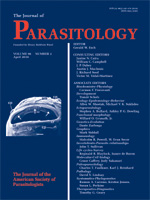The present study showed that ancient parasite eggs, not commonly present in soil samples from medieval Korean tombs, have been found in a very limited number of cases that satisfy certain archaeological requirements. In our paleo-parasitological examination of soil samples from medieval tombs encapsulated by a lime soil mixture barrier (LSMB), parasite eggs were more commonly detected in tombs that contained remains with clothes, hair, or brain tissue, though samples from not all such tombs contained eggs. Nonetheless, there was a close correlation between the preservation of certain types of cultural or human remains and the presence of ancient parasite eggs within medieval Korean LSMB tombs. Such remains, therefore, could be regarded as a strong predictor of well-preserved ancient parasite eggs in soil samples from LSMB tombs.
How to translate text using browser tools
1 April 2010
The Influence of Differential Burial Preservation on the Recovery of Parasite Eggs in Soil Samples from Korean Medieval Tombs
Min Seo,
Chang Seok Oh,
Jong Yil Chai,
Sang Jun Lee,
Jun Bum Park,
Byung Hoon Lee,
Jee-Hee Park,
Gil Hwan Cho,
Dae-Woo Hong,
Hyun Uk Park,
Dong Hoon Shin
ACCESS THE FULL ARTICLE

Journal of Parasitology
Vol. 96 • No. 2
April 2010
Vol. 96 • No. 2
April 2010




